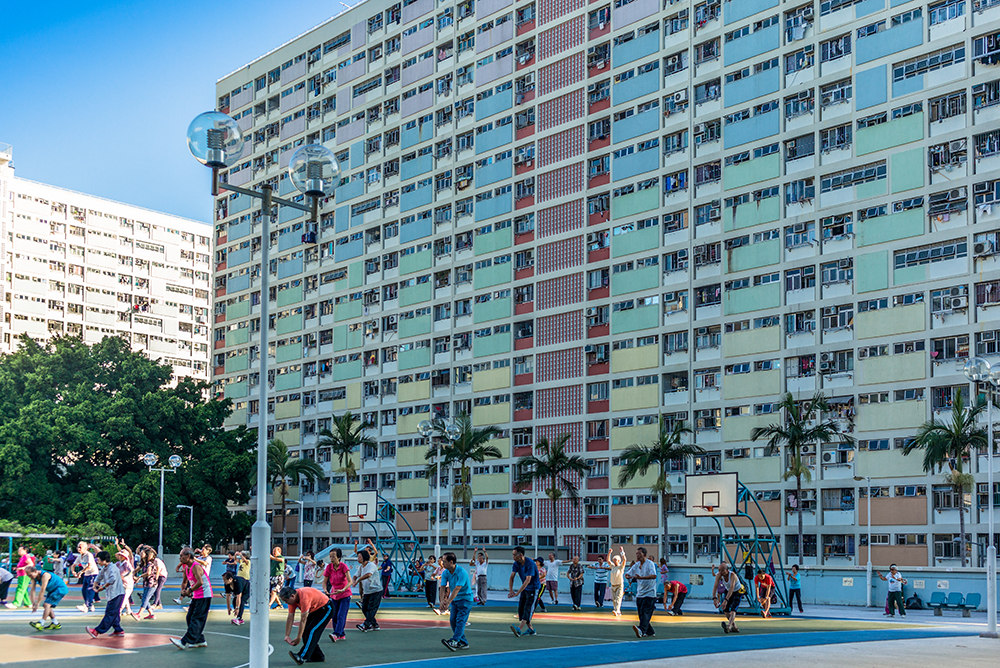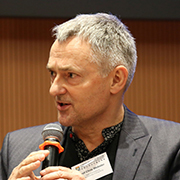May 2020 | Volume 21 No. 2
Cover Story
No Place Like Home
Many elderly people in Hong Kong and rural China have lived in their homes most of their lives. They know the neighbours, shops, sitting areas and transport links. But instead of enjoying the familiarity and security of their surroundings, some are being uprooted in their twilight years to make way for new developments or because their homes lack facilities they now need, such as wheelchair access and lifts.
The situation has attracted interest from HKU researchers, who are looking at how to improve the built environment for the elderly in both new and existing neighbourhoods.
“Our goal is to find architectural and planning solutions to some of the challenges that the growing population of elderly might face, whether it be mobility, access to services such as health centres, or opportunities for social connections. We also want to look at the impact that the built environment has on health and other indicators,” said the Dean of Architecture, Professor Chris Webster.
Several recent projects are addressing the problem by combining data about the elderly with assessments of the built environment, both in Mainland China and Hong Kong.
Banishing the relocation blues
Using a natural experiment in Suzhou, China, Professor Webster, Dr Ying Chang and Dr Sun Guibo are studying the physical and mental effects on farmers forced to move due to development that is changing rural environs into new towns, and measuring the health impact of alternative designs.
A baseline survey has been administered to more than 2,600 elders, including a control group still living in their village, and health information collected. The first part of the study was completed in November 2019 and yielded rather depressing preliminary results: those who were relocated had statistically higher levels of hypertension and were more likely to be overweight. The researchers hope they can improve such outcomes through more consultative planning as well as better design.
“We want to make things better for these residents by looking at the environmental features that are best for their mental, physical and social outcomes. For example, what are the effects of planting greenery outside their buildings, or installing facilities for them to exercise or sit and socialise, or placing roads away from these public places? China has invested a lot of money in greening, but is it being spent in ways that the elderly need?” Dr Sun said.
The team is also conducting natural experiments in Hong Kong. One project measures impact of the new Tuen Ma Mass Transit Railway (MTR) development on a group of elderly living near a station; another, the impact of relocating elderly residents from sub-divided units (earmarked for development) in To Kwa Wan to high-rise commercial housing. Results are pending but, as with the China study, Dr Sun said they hope to show how changes to the built environment causally affect the mobility and well-being of elderly people.
Optimal thresholds
Professor Rebecca Chiu Lai-har has also studied the changing living circumstances of Hong Kong’s elderly and her work has had policy impact. The Hong Kong Housing Society (HKHS) adopted her recommendations to include wheelchair access and other support and services to make it easier for the elderly to ‘age in place’ in its estates (see Vol. 19 No.2 of the Bulletin), and to design new housing estates with buildings and services targeted at seniors. The HKHS and government also both recently adopted her recommendation to let elderly homeowners essentially swap flats with other eligible homeowners so they can move into a smaller place, while staying independent.
Professors Webster and Chiu also work with Dr Derrick Ho Hung-chak, who is measuring the associations between estate layout, density, air pollution and other environmental features and the health and behaviour of elderly residents. Dr Ho’s early findings show there can be too much of a good thing – too many open spaces put facilities beyond easy walking distance for the elderly, while too many health clinics stigmatise a place for them.
“There should be a balance of these things. We’re trying to determine the optimal threshold for different environmental factors around public housing estates that will give older adults high mobility and comfort,” Dr Ho said.
Dr Ho and Professor Terry Lum Yat-sang of the Department of Social Work and Social Administration are also looking at how the physical environment of HKHS estates affects the mental health of the elderly. “We want to see if a more stimulating environment can promote more social interaction and physical activity and help slow the deterioration of mental health,” Professor Lum said. The numbers are still being crunched but so far it seems that a sense of community and social support make people more willing to stay in their estate.
Professor Lum also works on a Jockey Club-funded project to help districts develop initiatives that will qualify them for the WHO Global Network for Age-friendly Cities and Communities. An example of his recommendations was to install fold-down chairs at tram stations and seats in MTR stations so the elderly can take a short rest while they wait for transport.

Elderly residents doing exercise in the open space of the Choi Hung Estate, a public housing estate built in the 1960s.

Installing fold-down chairs at tram stations and seats in metro stations for elderly to take a short rest when waiting for transport are one of the many ways to make the city more age-friendly.
Our goal is to find architectural and planning solutions to some of the challenges that the growing population of elderly might face, whether it be mobility, access to services such as health centres, or opportunities for social connections.

PROFESSOR CHRIS WEBSTER

